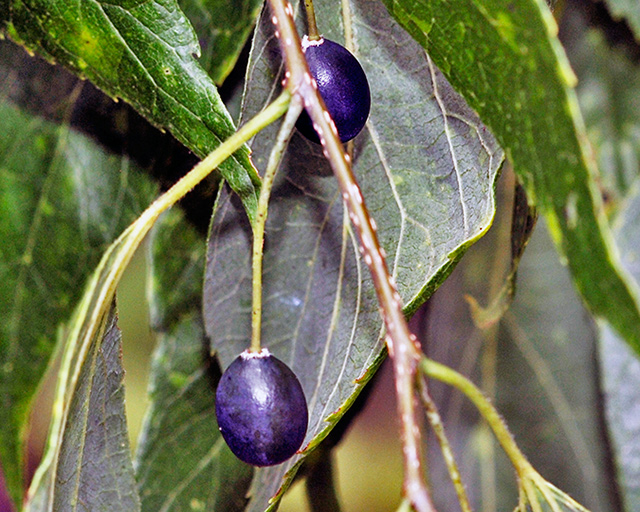Hackberry Tree
Celtis occidentalis
Hemp family, Cannabaceae
Celtis occidentalis, commonly known as the Hackberry tree, is a medium to large sized deciduous ornamental tree native to the United States and found throughout the east and the midwest. The Hackberry produces small, green clusters of male flowers in April to May and in the fall and winter, female blossoms produce dark purple berry-like clusters (drupes) of fruit. These fruit drupes attract a variety of wildlife, especially birds, which eat the fruit and spread the seeds. Some of the many winter birds who feed on Hackberry drupes are flickers, cardinals, cedars, brown thrashers, waxwings, mocking birds and robins. The Hackberry attracts several species of butterflies as well, including American snout, comma, hackberry, mourning cloak, tawny emperor and question mark.
The Hackberry tree grows 40 to 60 feet tall with wide arching branches and 2 to 4 inch spear head shaped leaves, making it a perfect tree for providing shade. It grows well in moist, rich, well-drained soil and full sun, but the Hackberry is very hearty and can withstand harsh conditions. It can thrive in a broad span of temperatures and tolerates wind, air pollution, flooding, and drought.
The Hackberry was first cultivated in 1636, and its tough yet flexible wood was used by settlers and pioneers for cabin flooring and other practical applications, such as barrel hoops.

